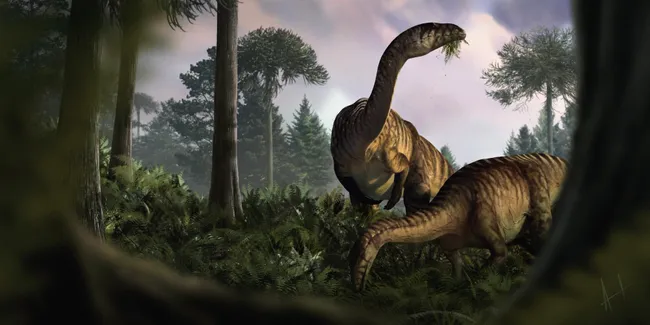Fossilized digestive material offers unparalleled insights into the dinosaurs’ diets, feeding behaviors and parasites.
Scientists have made a surprising discovery that helps explain how dinosaurs rose to power—by studying fossilized vomit and poop. Published on Nov. 27 in Nature, the research provides new insights into dinosaur diets and how these ancient creatures outcompeted other animals during the late Triassic and early Jurassic periods.
“Diet and ecology are crucial factors in shaping animal evolution, both now and in the past,” said study co-author Martin Qvarnström, an evolutionary biologist at Uppsala University in Sweden. “Simply analyzing bone remains doesn’t give us the full picture of how dinosaurs became dominant.”
Dinosaurs first appeared during the mid-Triassic period, around 247 million years ago, but it took another 40 million years before they became the dominant force on Earth. To understand how they displaced other large animals, the researchers analyzed more than 500 fossilized remains from the Polish Basin, spanning from the late Triassic to the early Jurassic.
However, rather than focusing on bones, the researchers turned to fossilized vomit (regurgitalites) and poop (coprolites), which offer important clues about the dinosaurs’ diets, feeding behaviors, and even their parasites. These findings allow scientists to track how dinosaur diets compared to other animals at the time and how they evolved over millions of years.
Among the most intriguing discoveries were the diverse foods found in these fossils. “We found everything from tiny beetles to half-complete fish, bones, teeth, and plant remains,” said Qvarnström. One particularly interesting find was a piece of a temnospondyl amphibian skull—massive, toad-like creatures that were once thought to be unattractive to predators. Another regurgitalite contained the bones of a small crocodile.
By combining these fossil findings with data on climate and plant life from the same period, the researchers were able to reconstruct prehistoric food webs. The results showed that dinosaurs consumed a wide range of foods, which helped them adapt to changing environments and outlast their more specialized competitors. This dietary flexibility likely allowed plant-eating dinosaurs to grow much larger, paving the way for the evolution of larger carnivores.
Lawrence Tanner, a professor at Le Moyne College in New York, added that this study suggests the rise of dinosaurs was a gradual process over the late Triassic period, rather than the result of a single catastrophic event.
The research team hopes to expand their studies globally to further investigate dinosaur diets and their role in the animals’ rise to dominance. “There’s still so much to explore,” said paleontologist Grzegorz Niedźwiedzki, co-author of the study.
